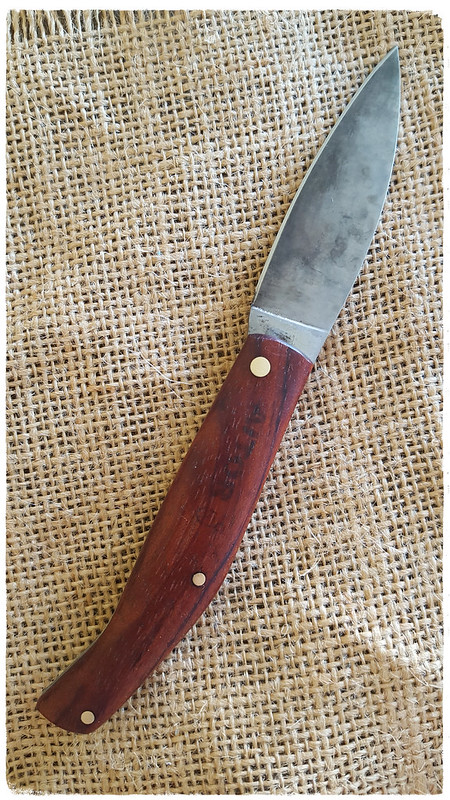- Joined
- Mar 24, 2020
- Messages
- 581
That Agenais is mind blowing! Great find!!!
That Agenais is mind blowing! Great find!!!
Dumas has registered a lot of number, except 82 !I am sure it was hundred and something years ago. I won this one at an auction. It is very old, probably end of 19th beginning of 20th century. Another member of the forum told me that is Rousselon Freres folder. Their two big brands were Dumas 32, and Damas 82.
Thanks for the info. As I am an expert I am open to any information.Dumas has registered a lot of number, except 82 !. http://bcma.web.free.fr/IMG/Marques/32.png
Damas 82 is probably a counterfeit (seemingly pretty well made), 82 has not been registered. http://bcma.web.free.fr/IMG/Marques/82.png
Dumas 32 / Damas 82 would be pretty close for someone who maybe did not stay long at school !
Both are very old local patterns and it is possible to find some dating beginning / mid XIXth century. I have yet to see an equally old Spanish knife...Question for those in the know. Did the Agenais and St. Amans come first, or were they inspired by a Spanish pattern?
For example -

Counterfeit does not mean "made in China".Thanks for the info. As I am an expert I am open to any information.
I can see you are French. Could you look at this one, please.
https://www.lecouteau.info/catalogues/rousselon-frères-1935-prof/
Thanks
Edit. I won this knife from a very reputable auction house called Sworders, UK. This small knife used to be part of Bill Brown's collection. But as I said I am not an expert which means that this knife could be counterfeit...
I see. Thanks for the info! This maybe the case.Both are very old local patterns and it is possible to find some dating beginning / mid XIXth century. I have yet to see an equally old Spanish knife...
Thiers copied the pattern as early as mid XIXth. Spain was the second market after France (they even changed the brand to make local : « so Barge-Tarry's "Coupe du Rasoir " changed to " Corte de Afeitar".
Counterfeit does not mean "made in China".
Since it's beginning Thiers made counterfeits. First of local patterns usually made by local cutlers, then patterns usually made in Chatellerault and other places and finally, after having eliminated external competition, the most renowned brands. Pradel is the best known example. All (even 84Pradel) made since the demise of the true "anchor" Pradel are counterfeits.
This is made easy by the way Thiers cutlery functions. There's a few makers who provide partsand "Brands" assemble these parts. So it is very easy to sell a counterfeit as well made as the "original ", with the very same parts from the same provider. (sometime even made by the same worker in the case of cottage industry).
It is as simple as stamping a blade...
There's an excellent articleon the subject : http://www.marques-de-thiers.fr/articles/article_marques_centre.html
Thank you!!That Agenais is mind blowing! Great find!!!
Even if Louis the XIVth once said "Il n'y a plus de Pyrénées !", long, long after it was still a barrier between the two countries. I have seen agenais dating early XiXth.Question for those in the know. Did the Agenais and St. Amans come first, or were they inspired by a Spanish pattern?
For example -



Nice looking scales on that 1 Will.New in this week & very satisfied

Those are really nice, among my favoritesmitch13 Thanks mate, I'm very pleased with the colour of the Horn & the general finish of the knife.
Here's the pile side, also stripey .


